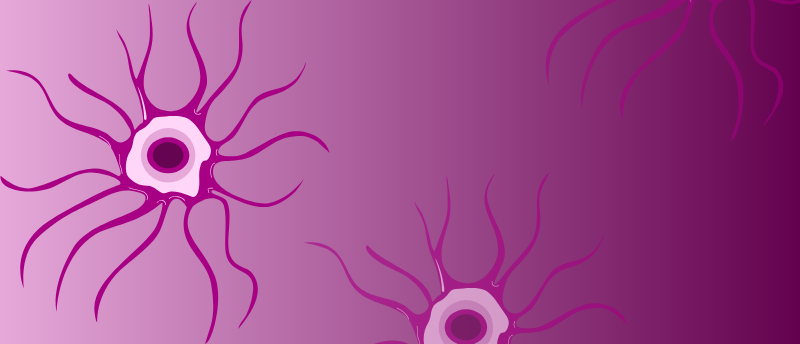An innovative way to study astrocytes’ signature star shape

Original story from Johns Hopkins University (MD, USA).
Scientists have engineered a nanowire platform that mimics brain tissue to study astrocytes, the star-shaped cells critical for brain health, for the first time in their natural state.
Astrocytes are the brain’s most abundant and mysterious cells, responsible for regulating communication between neurons and helping to maintain the blood–brain barrier. They are also highly dynamic shapeshifters, something they do not do on typical petri dishes, leaving major gaps in our understanding of how they operate.
“Frustratingly little is known about the stunning diversity of astrocyte morphology, and we also don’t know much about the molecular machinery behind these shape shifts,” shared co-senior author Ishan Barman, a Johns Hopkins University (MD, USA) bioengineer in the Department of Mechanical Engineering. “They won’t take on these shapes on glass, so the question for us was how do we replicate the in vivo shape but in vitro?”
By enabling the study of astrocytes in unprecedented detail, the work – led by Johns Hopkins and the National Research Council of Italy (Rome, Italy) – will help us better understand brain function and dysfunction, including what goes wrong in neurodegenerative disorders.
 What precursor polymers can reveal about pathological proteins
What precursor polymers can reveal about pathological proteins
A crucial ‘precursor’ has been identified in pathological protein fibril formation.
Astrocytes underpin brain health. They essentially form the brain’s scaffolding. Malfunctioning astrocytes are linked to numerous diseases, including Alzheimer’s and Parkinson’s.
Scientists suspect astrocytes’ signature star shape is connected to their various key functions, but those shapes collapse as soon as scientists attempt to study them on typical glass trays under microscopes.
“To truly understand astrocytes, we need to replicate their environment,” Barman commented. “The shape is not random. And if we’re not able to recreate it faithfully, we’re not going to be able to understand the function.”
To allow astrocytes to be studied in their true form, the team engineered two breakthroughs.
First, they created nanowire mats from glass that mimic the texture of brain tissue while remaining optically transparent. When placed upon this nanowire structure, the astrocytes not only maintain their signature shape, but they also grow and thrive.
“When grown on nanowire mats, astrocytes regain their star-like morphology, branching and maturing as they do in vivo in the brain,” explained co-senior author Annalisa Convertino of the National Research Council of Italy.
By combining these nanowires with a new form of imaging that provides high-resolution, 3D–views without fluorescent tags or invasive staining, the team was able to capture how astrocytes grow, branch and change shapes.
“The ability to combine nanowire culture with high-resolution, label-free imaging was critical,” shared co-first author Anoushka Gupta, a graduate student in Barman’s lab. “It finally allows precise quantification of astrocyte morphology.”
The team expects the technique, which could also be used to study other cells, to advance ‘brain on a chip’ technologies including organoids and other next-generation neuroengineering platforms.
“This is a major leap beyond flat culture models and paves the way for a new generation of ‘brain on a chip’ models,” Barman concluded. “We believe this could herald the beginning of a new way to study neurogenerative diseases, drug effects, and brain injuries.”
This article has been republished from the following materials. Material may have been edited for length and house style. For further information, please contact the cited source. Our press release publishing policy can be accessed here.